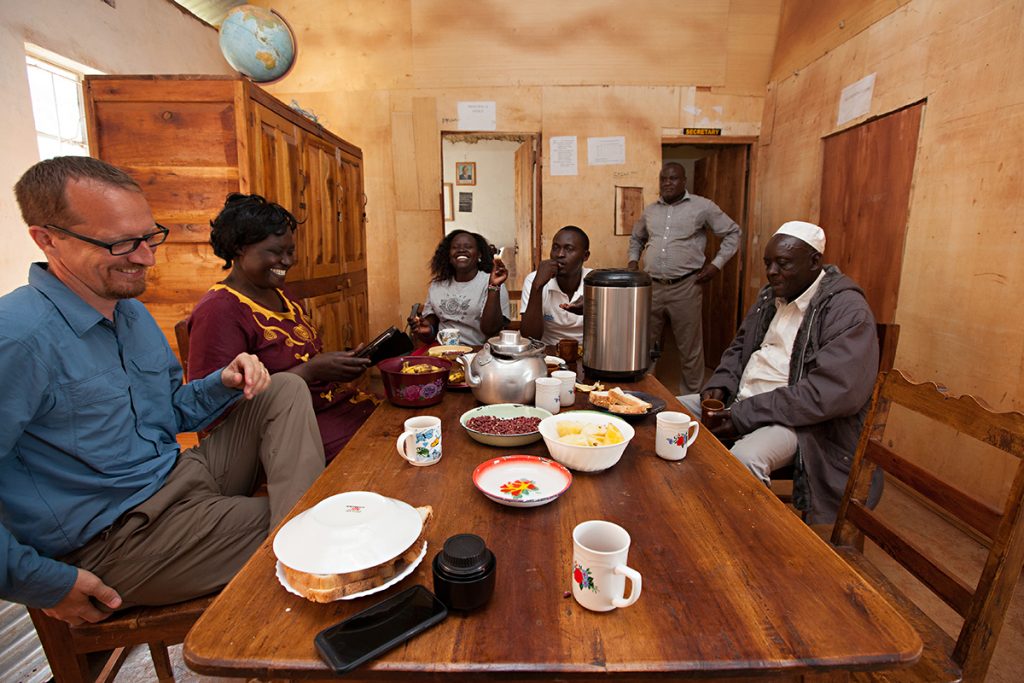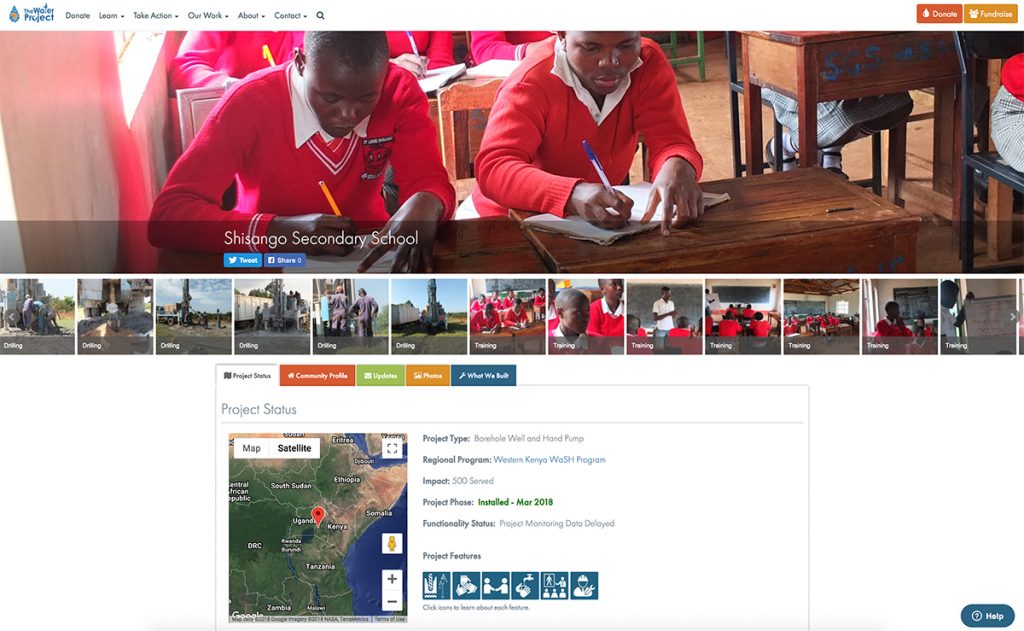What we learn together
The Value of Relationship – The Table: Part 4 of 5
Part 4: The Table
At The Water Project, we like to imagine that achieving access to safe, reliable water is like a family meeting. Everyone involved has a seat at a large round table — an equal position for all around the meal. At the table sits The Water Project, our local teams, members of the community where projects take place, government officials, donors and other members of the broader water sector. The Water Project is the convener, but there is no head of the table. Rather, it is a community of striving to ensure everyone else at the table can thrive.

Our founder and two local partners meet with a school principal in Kenya
Each seat is crucial to achieving the shared goal of ensuring safe, reliable water in the communities. At a table, different voices will arise as experts at different times.
One of the best expressions of the table metaphor is our online project reporting where we tell the story of a reliable water point. Officers from local teams, oftentimes people from the very communities where they are working, conduct surveys and interviews as a part of the process to evaluate potential water points. It ensures a community’s seat at the table is occupied and amplified.
Traditionally, these kinds of reports are one-way communications between an organization and a donor to show their money is spent appropriately. We use the entire reporting process to facilitate the most important conversations at the table and ensure the highest possible return on investment.

A project report from Shisango Girls School (Principal seen above)
The ongoing monitoring of these projects is another crucial layer. Reliable water is a continuing conversation. Projects are visited no less than three times a year by our local teams to check that water still flows and that it is safe to drink.
The local teams are a critical part of the monitoring process; visiting with communities before, during, and after a water point is installed. They are members of these communities. They speak the local languages. They drink from the same water sources.
The status of a project is updated on our website and within each report for everyone to see in near real-time. At any moment in a projects life, anyone can look up the status — including past failures, projects that can not be repaired or projects we no longer can monitor.
This information is shared across all seats at the table, first to The Water Project and then on to our supporters, the communities where we work, and our local experts. Being transparent by reporting on each of our water points is a way to bring more people to the table, adds additional layers of accountability, and fosters interdependence.
Throughout, we learn new ways to ask questions to better understand the reality of impact, to identify issues in need of repair, and to imagine new ways to share reliable, safe water.
<< Back to Part 3 – Continue Reading – Trust: Part 5 of 5 >>
Home More Like ThisTweet